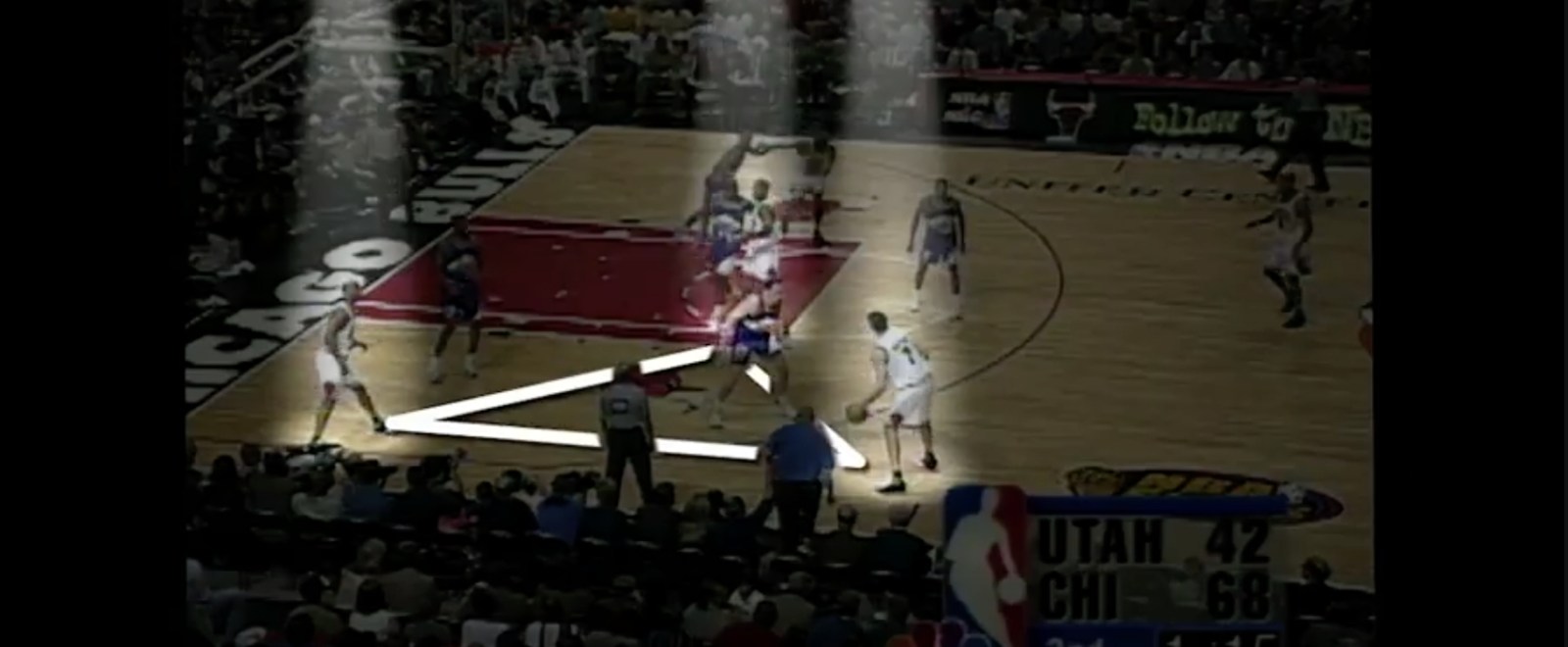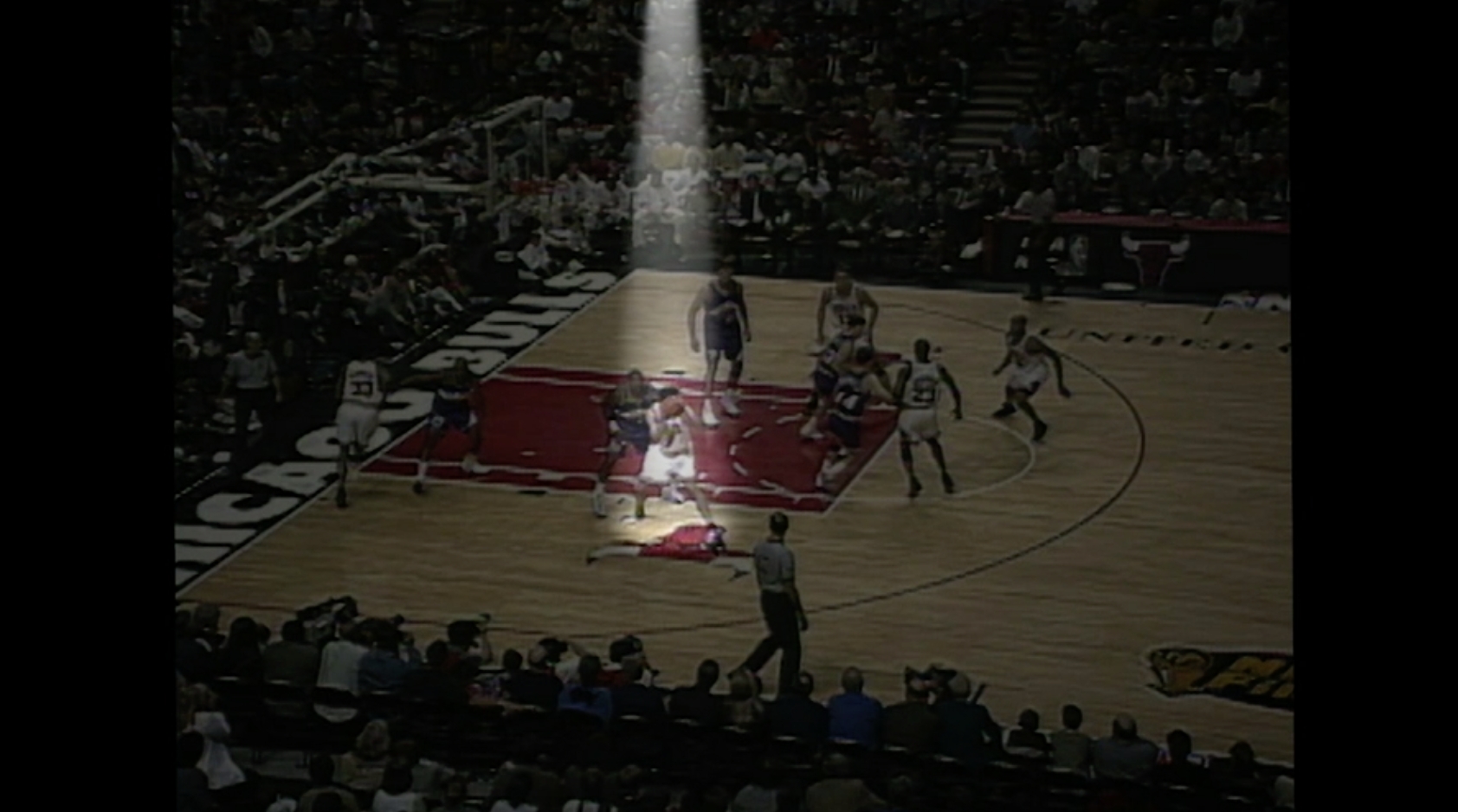
A cool addition to ESPN’s blitz of “The Last Dance” across all its platforms came this week in a Phil Jackson-narrated episode of “Detail,” in which Jackson breaks down his cherished Triangle offense. The episode is available along with the entire series, which began with Kobe Bryant as host and continued on with people like Geno Auriemma, Nick Saban and Peyton Manning, on ESPN+.
Jackson breaks down Game 3 of the 1998 NBA Finals. While it was hardly the most competitive game that Michael Jordan’s Bulls ever played, the offense was clearly churning. Chicago won the game, 96-54, behind Jordan’s 24 points, and Jackson is able to show how so many of the plays Jordan made look so effortless actually materialized.
If you’re a basketball nerd, you’ve already read some description or explanation of the Triangle before, maybe even in Jackson’s book, “11 Rings.” Yet Jackson does it more simply in the “Detail” than an interview or essay could ever do justice.
The tenets Jackson lays out are pretty plain:
- Use the Triangle at the beginning of the game to feel out the opponent’s defensive coverages
- Screen and move to get players into open space, and aggressively rotate the ball from one side of the floor to the other to find good shots
- Fungible pieces are needed to make it all work, which is why Jordan, Scottie Pippen, and Toni Kukoc executed the system so well
- Spacing is less of a focus than it is now. Instead, cutting and passing are what creates open shots, not stationing players in one spot to pull defenders away from the floor.
Jackson explains the Triangle in a way that makes it seem far more modern and digestible, rather than just a hallowed code name that unlocked a dynasty. NBA analyst Nate Duncan cut a video of a simple split cut while Kukoc is in the post, for example, that you could find in many Warriors games over the past several years.
This should look familiar to Warriors fans. No wonder Kerr implemented the split cut, Phil Jackson ran it for him all the time. (From the recent ESPN+ Detail episode) pic.twitter.com/ougzQDvl1b
— Nate Duncan (@NateDuncanNBA) April 24, 2020
On the other hand, some of the principles seem downright ancient in hindsight. Most of the pick-and-roll happens at the elbow for the Bulls, using Pippen and Jordan’s midrange gifts rather than using the added value of the three-point shot like we see Damian Lillard and Steph Curry do these days. Much of the offense also runs out of the post, specifically with the ball in the hands of Kukoc or Jordan. Post-ups are last-ditch bailouts in an entirely spaced-out court, but for the Bulls, it was a playmaking weapon.
This is a play that caused Jackson to say “Toni really has a lot of space right here.” Take a look:

That is the opposite of a lot of space by today’s standards.
The Triangle was the offense used by the best teams in the NBA for basically two decades, from Jordan’s first championship in 1991 to the Lakers’ last title in 2010. Watching Jackson break it down, I realized it effectively was a bridge from the post- and iso-heavy 1970s and 80s to the screen-and-move brilliance of the Seven Seconds or Less Suns and Light Years Warriors.
Of course, the defining characteristic of those Bulls was not the Triangle. With Jordan, a set could fail and still result in a high-percentage shot. And Jackson, to his credit, was always open to giving great players the freedom to make mistakes and play their game. As long as they adhered to the general principles he taught and respected their teammates and the game, they could freelance.
“If guys took a three-point shot out of sequence, they got a ‘silly fine,’” Jackson says in “Detail.” “Offense not run correctly or aborted, we had reprimands. Not a fine, but we wanted guys to honor the game. That basically was the theory behind how we wanted to play.”
Still, Jackson talks through a poorly run post-up by Jordan that ends in a turnover as if it’s just part of the deal. Pippen clanks a midrange jumper when he should have driven to the middle and Jackson still calls it a “good shot.” They earned the benefit of the doubt and Jackson’s trust over time, and were able to subsume the Triangle in many ways.
